How to Draw Using Sketching Pencils
From quick sketchbook caricatures to polished landscapes, pencil is versatile enough to bring your wildest creative ideas to life.
"Pencil and paper let you get your ideas down super-fast. You can do a brain dump until you find something that you really like."
Tammi Heneveld, Artist.
Your creativity doesn't need to end once you've put down the pencil, either. Scan your sketch to use Adobe Illustrator and turn to add colour, edit the composition or simply use your illustration digitally. Or, open your pencil sketch in Adobe Fresco and add to it with custom brushes to take your drawing from doodle to masterpiece.
Learn how to improve your pencil drawing skills in our guide.
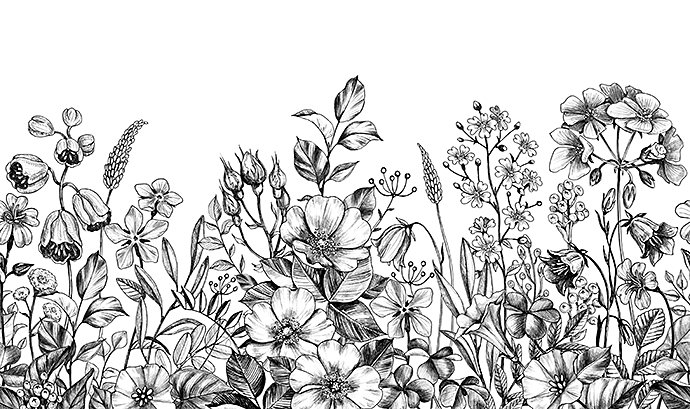
What you'll learn:
- Step-by-step pencil sketching tips.
- Picking the right pencil.
- Hatching and crosshatching.
- Scribbling.
- Stippling.
- Blending.
- The 70/30 rule.
- Pencil sketching ideas and inspiration.
- How to use Adobe Illustrator to edit pencil drawings.
Step-by-step pencil sketching tips.
Learning a few basic pencil sketching tips and tricks can help make those first steps on the road to creativity smoother and more enjoyable.
So, get your pencils ready and read our top tips to help you get started.
Picking the right pencil.
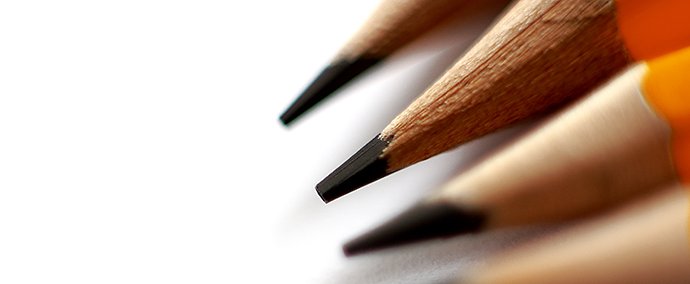
Different pencils have different strengths. The pencil you use to sketch a rough outline won't necessarily be the same pencil you should use to add light and shade or texture.
"I use a regular HB or No. 2 pencil to sketch things out roughly. Then I use a mechanical pencil to tighten up the details."
Jung Hu Lee, Artist and Illustrator.
How to find the right pencil:
- Look at the hardness of your pencil. Use a B grade to create lines for shading or blending. Use a harder H grade for solid lines that you won't smear as easily.
- Sharpen your pencil to a point to create fine lines or let it blunt if you want a thicker line.
- Use a mechanical pencil for technical drawings, the fine nib will help you to create a consistent line that's perfect for intricate details.
- Experiment with coloured pencils to add another layer to your work. Sharpen them the same way as your sketching pencils to vary the thickness of your lines.
- Charcoal pencils are your best option to create deep black or grey lines for a different tone and texture to graphite pencils.
- To create a true black that you can't get from graphite, try using a carbon pencil.
- To sketch a design outline on ceramic or plastic before filling it in with paint and other mediums, the waxy crayon-like texture of a grease pencil is ideal.
Hatching and cross-hatching.
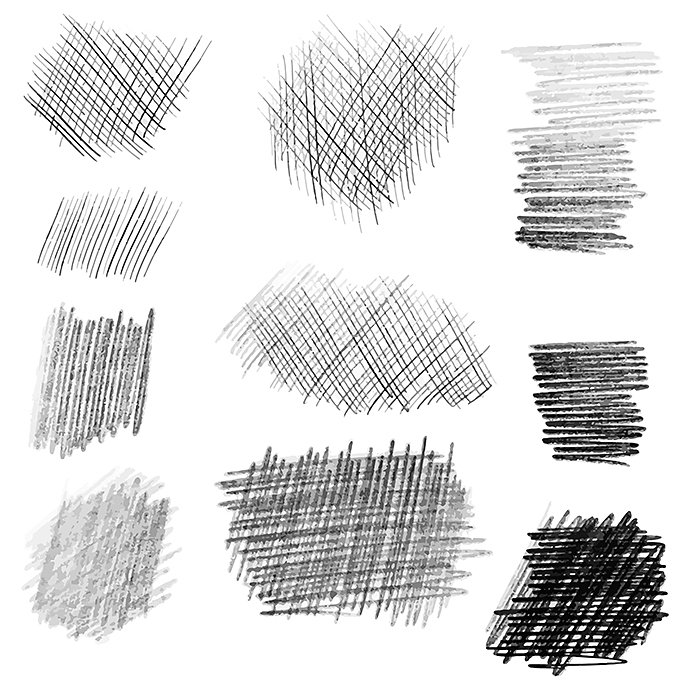
Hatching and cross-hatching are great ways to create light and shade in your sketches. This simple technique involves using parallel lines or converging lines to add texture:
- Draw a series of parallel vertical lines down your page – this is called hatching.
- Add a series of horizontal lines over the top of your vertical lines to create a grid-style pattern.
- Your horizontal lines should cross over your original lines in any direction. This cross-over effect is called cross-hatching.
- Draw fine lines with larger spaces between them to create lighter shading effects.
- Thicker hatches with smaller spaces between the lines will create a much darker tone, perfect for creating shadows.
Scribbling.
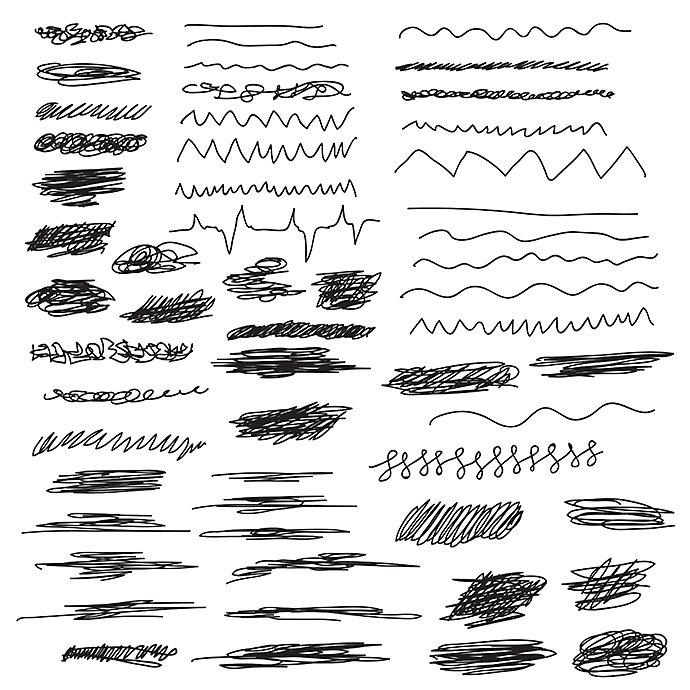
You might associate scribbling with mistakes or a small child's early artwork. But, used properly, scribbling is another fantastic way to add texture to your work. It's particularly useful when creating textures such as hair, rope or fur. How to use scribbling:
- Create a light outline so you know what space you want your scribbling to fill.
- Use curved, erratic lines to fill the space and create the appropriate desired texture.
- Tighter scribbles will create darker shades to give the illusion of a thicker texture, while adding more space between scribbles will give the impression of more light.
Stippling.
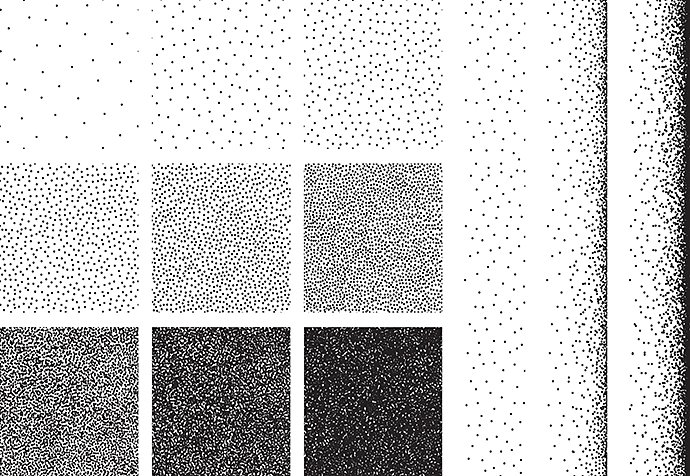
Using dots to build shapes, density and texture in your sketches is called stippling, or sometimes pointillism.
It's like hand-crafting computer pixels to build your images. While it can be time consuming, it's a unique way to experiment with your drawing style and bring a different level of creativity to your work. How to use stippling:
- Before starting, consider the different shapes that will make up your image and where they'll sit on your page. This will help you put together an outline to build on.
- Decide where your light is coming from in the image, so you know which areas require lighter and darker shades with stippling.
- Graphite pencils are perfect for stippling, but be careful, as they can smear as you move your hand across the page. Coloured pencils will add brightness and won't smear as easily as graphite.
- Place more dots close together to create shadows and spread your dots out further, or leave areas completely blank, to show where the light is.
- Aim to start your picture from the darkest point as this is where you'll need to add the most dots.
- Precision is key. Try to avoid creating the occasional dash among all those dots as it will stand out and distract from the overall effect of your image.
- Move slowly to avoid any mistakes.
Blending.
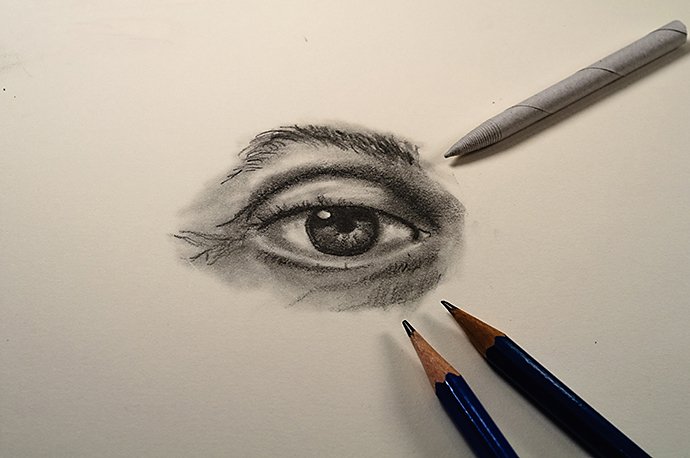
Blending is a great way to create gradients and craft smooth lines, for example, the capture the curvature of a face.
To blend using graphite pencils:
- Chose a soft B grade pencil and shade very lightly at first.
- Gradually layer up your design with more graphite to create a light and dark effect.
- Once you have your area filled, use your fingers or a blending stick to soften the pencil lines and blend together.
To avoid your initial pencil lines showing through:
- Try scribbling on a spare piece of paper.
- Dab your fingers or blending stick in the dust that forms from your scribbles and smooth it over your image, building the layers to create darker shades where needed.
- Repeat the process, creating more scribbles when you need more graphite.
The 70/30 rule.
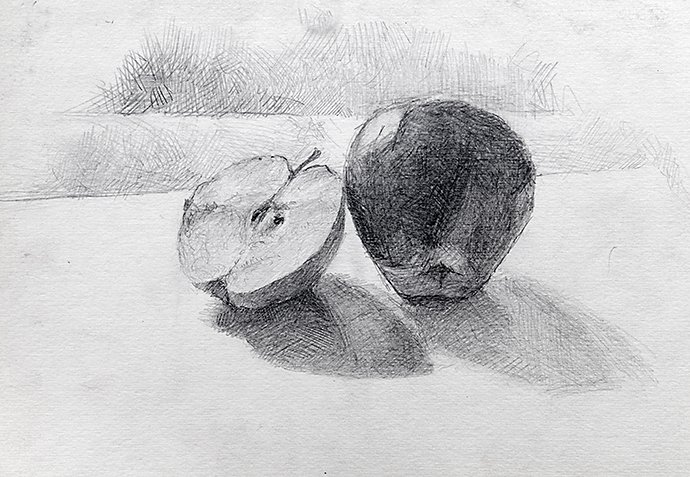
Following the 70/30 rule helps you to create an effective composition for your pencil drawings. It helps draw the eye to the main areas of your drawing. To follow the 70/30 rule:
- Use 30% of your drawing to add intricate details using your preferred technique.
- Use less detail to create 'filler' for the other 70% of your picture.
- The eye will be naturally drawn to the more detailed 30%, so make this the focus of your image.
- By directing the attention towards your focus, you highlight the purpose and intent of your illustration, while also creating an appealing and complimentary surrounding area.
Different artists often find certain techniques suit their pieces more than others. So, experiment with as many as possible to find the one which works best for you.
Pencil sketching ideas and inspiration.
Getting started can be the hardest part of creating a piece of art. A little inspiration can go a long way, so we've pulled together some fantastic examples to help spark your imagination when creating your next pencil illustration.
Use these images to inspire your own piece or try copying them to practice different drawing techniques and styles.
Plants and nature.
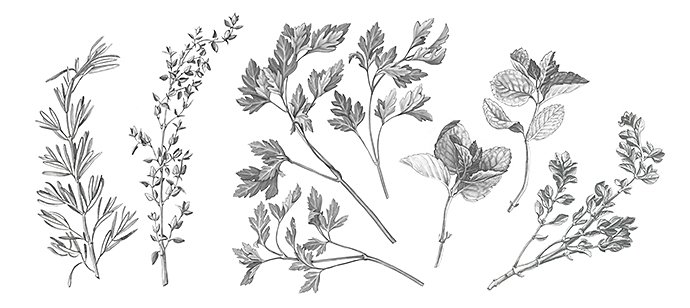
Plants are a fantastic opportunity to practise your blending skills. Pick out the different hues in a plant's leaves and petals and gently blend together to give your drawings a lifelike quality that's not possible with simple block colours. You can also use hatching to add texture to leaves and plant pots.
Cars.

Sketching your favourite supercars or classic models is a great way to perfect your clean pencil strokes. When drawing mechanical objects, like vehicles, hatching and blending can be used to create shade and texture.
Fruit.
?$pjpeg$&jpegSize=200&wid=690)
Fruit is a great starting point when you're learning to draw. Super accessible, it's easy to study and practise with fruit, whether that's an apple or a bunch of grapes.
Cross-hatching helps give rounded fruits such as cherries and raspberries a 3D look, while scribbling and stippling help to create shadows and indicate where the light is within your image.
Furry friends.
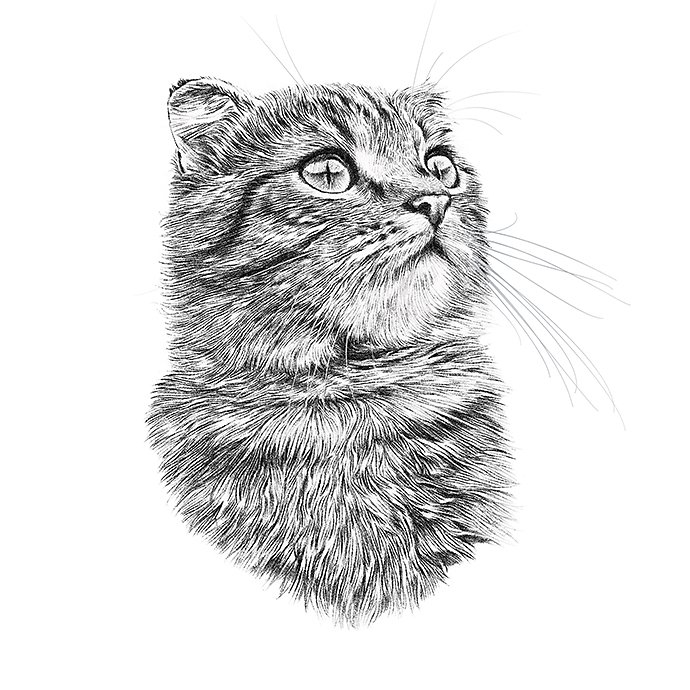
Animals of any kind can be a great starting point when you're experimenting with different pencil sketching techniques.
Creating texture is one of the best ways to bring your art to life. The blending of different colours also makes animals, like your pet dog for example, look more lifelike. Using one block of colour can look a little too solid for soft, fluffy fur.
Portraits.
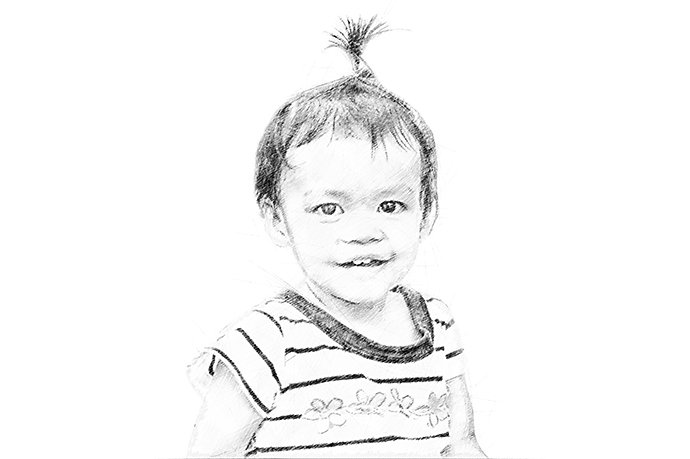
Portraits are a popular style for many pencil artists. Not only do they offer the chance to practice different drawing techniques, they also make a great, personalized gift.
In this example, the simple sketch has been enhanced with various degrees of hatching to create shadows and folds in the subject's hair and clothing.
Birds.
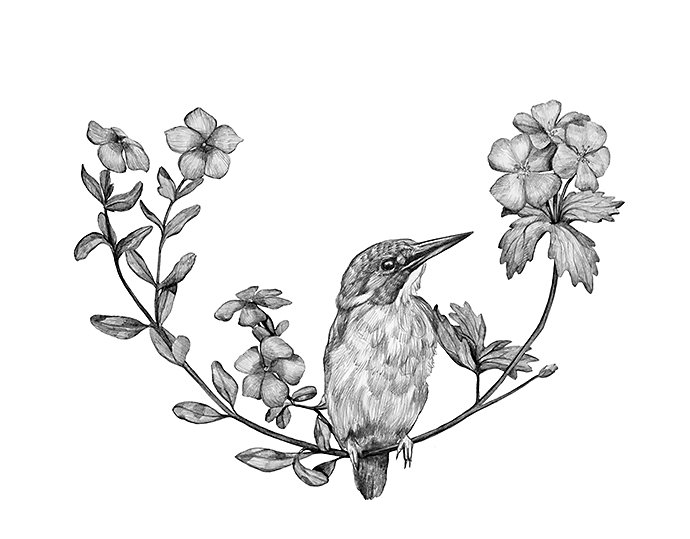
Feathers pose a great challenge for budding artists looking to test their skills. In this example, you can see how the feathery texture has been created using hatching. The artist has also used blending to create areas of shadow when drawing the bird, adding depth.
Abstract patterns.
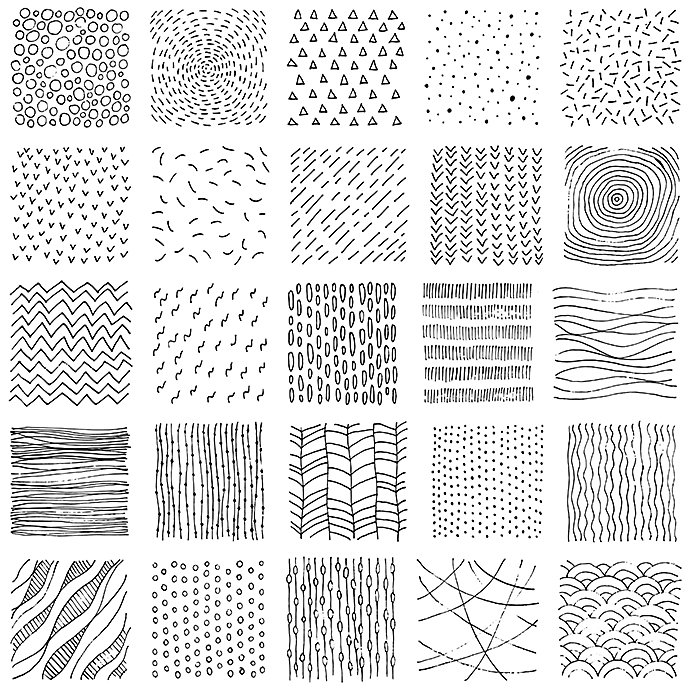
If you can't settle on an object or scene, you could choose to practice your techniques by creating an abstract pattern. Draw simple, geometric shapes within individual boxes like above and fill each shape with a different technique.
Anatomy and poses.
?$pjpeg$&jpegSize=200&wid=690)
Drawing accurate anatomy and poses is one of the greatest artistic challenges and a true test of any budding artist. You'll need to master various techniques helps to create the different textures of the human body.
Cityscapes.
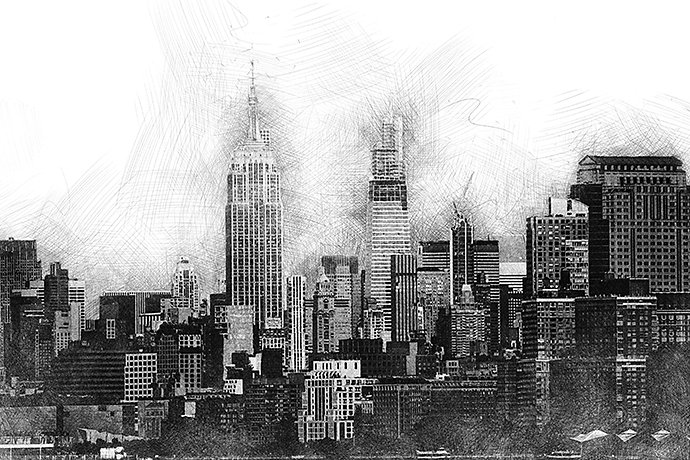
City skylines can be a perfect subject for a pencil illustration. Try your hand at technical drawing, using perspective to form an impactful cityscape. If you live in a city, try taking a photo of the skyline and using it for inspiration. Or, simply search for photos of famous cities and use those to guide your illustration.
Check out more pencil drawing inspiration from the talented artists and illustrators on Behance.
How to use Adobe Illustrator to edit pencil drawings.
A simple pencil sketch is always a great place to start. But, if you want to combine traditional techniques with a modern image editing, you can scan your artwork then edit or enhance it using Adobe Illustrator.
Here are some different ways to edit your pencil sketch in Adobe Illustrator:
Trace and adapt your pencil illustration.
With Image Trace in Adobe Illustrator you can trace an existing pencil drawing and turn it into a vector image made up of shapes and paths.
Once your basic shape is in place, you can use the various brush tools to add different line thicknesses, colours and textures. Customize your image to make it unique and reflective of your personal style.
Visit our blog for more information on tracing and editing with Adobe Illustrator.
You can find even more inspiration with our list of easy things to draw to get you going.
Drawing using the Adobe Sketch app
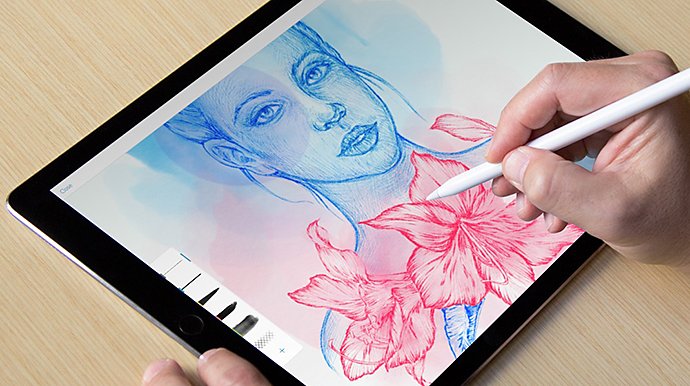
With the Adobe Sketch app on your smartphone or tablet, you can choose an image from your camera roll or from our bank of stock images to use as a base for your next drawing.
Choose your starting image and use two fingers to zoom out a little. You can then tap the Layer option to reduce the opacity, making it easier to sketch over.
Select your drawing tool and use the sliders to set the size of your tip and the flow to determine how much ink you use in each stroke. You can then select your chosen colour too. With 14 brushes to choose between, you have complete creative control.
Here are the full instructions and demo videos for how to use Adobe Sketch.
Create a custom brush for digital drawing.
To add a completely customized look to your artwork, try creating your own custom brush with the Art Brush Illustrator tool.
After you've scanned in your pencil drawing, you can transform it into a digital image using a custom brush, or combination of different brushes.
You can edit the shades, scale, proportion, direction and width of your brush too. Experiment with the different options in the properties tab and see what masterpieces you can create.
Watch the full Adobe Art Brush tutorial.
So what are you waiting for? Pick up a pencil and start creating your next sketch today. Remember, practice makes perfect, so try simple illustrations to start with, then build up to your pencil sketching skills until you're comfortable with a big project.
How to Draw Using Sketching Pencils
Source: https://www.adobe.com/uk/creativecloud/illustration/discover/pencil-sketches.html
0 Response to "How to Draw Using Sketching Pencils"
Postar um comentário